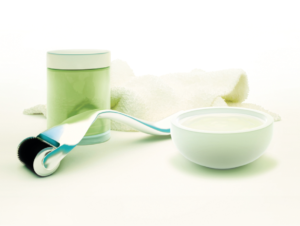
By Beth Landman
Every few months there seems to be a new type of laser meant to improve the texture of skin and reduce fine lines, but many doctors and aestheticians prefer the precision of microneedling. The procedure is very straight forward: A handheld device creates small punctures in the skin, triggering its natural healing mechanisms that produce youth-enhancing collagen and elastin.
“With lasers you have collateral heat damage to healthy tissue, but with microneedling it’s much easier to target a specific area,” explains Manhattan plastic surgeon Dr. Sharon Giese. “It makes skin more radiant, increases blood flow and decreases pore size as well as the appearance of fine lines. For best results, you need to get into the middle layer where blood is, so you will bleed a bit.” According to Manhattan dermatologic surgeon Dr. Howard Sobel, results should be evident after one session, and the treatment can be repeated every four to six weeks. “It’s an easy procedure and it makes the skin look tighter and even helps with discoloration,” he says. “It also aids in the absorption of active ingredients.”
Microneedling at a doctor’s office should be effective, but it might leave you a little red and puffy for a day or two. At KarinaNYC, micropuncture, a less-harsh version, is offered along with classic microneedling. “Micropuncture stimulates collagen and allows our anti-aging, pigmentation and acne serums to penetrate below the epidermis,” says the skin care salon’s owner, Karina Freedman. “Clients who have more serious scarring or pigmentation issues need 2-millimeter penetration of microneedling for more profound results. They can have it done on a Friday and return to work on Monday.”
Freedman also sends clients home with healing serums and warns: “Skin is sensitive after the treatment, so if you go into the sun without protection, it can erase the positive effects.” She recommends having the procedure done in the spring rather than summer.
Legendary esthetician Yasmine Djerradine, who now works out of the Manhattan office of dermatologist Dr. Anetta Reszko, uses a gentler version of microneedling, performed with a handheld machine called the Nannic, which has plastic—rather than metal—needles. “It is perfect for precise work on the delicate areas around the eyes, lips and neck,” she says.
There are also now plenty of over-the-counter microneedling gizmos, but don’t expect to get the full effect from them. Says New York dermatologist Dr. Marina Peredo: “A home device is not going to give the same penetration as an in-office procedure—but it’s fine as maintenance, particularly if you are just looking for overall glow and some textural improvement rather than trying to treat scars or pigmentation issues.”





